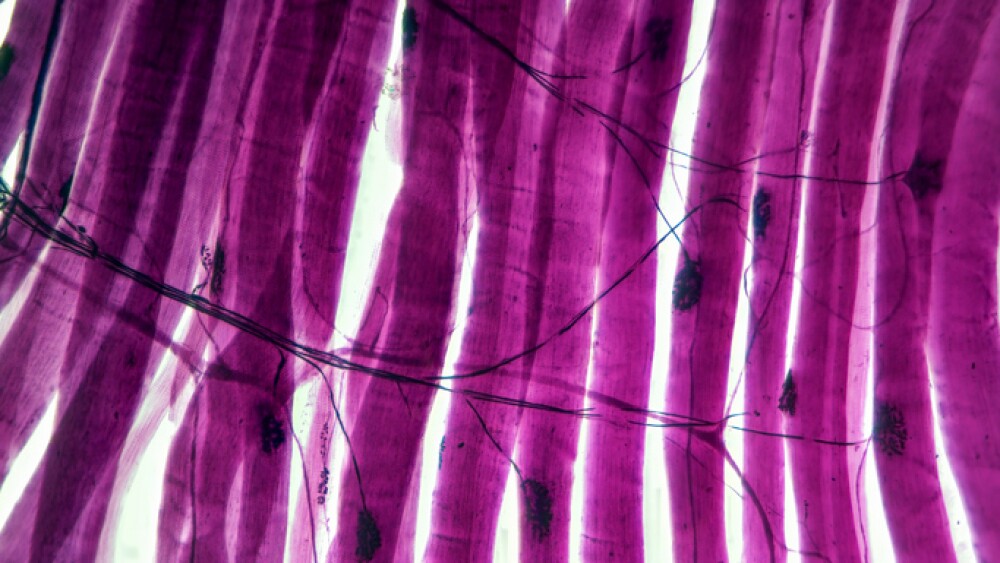Vesigen Therapeutics, Inc. recently showcased two data presentations at the Association for Research in Vision and Ophthalmology Annual Meeting and ten data presentations at the American Society of Gene & Cell Therapy Annual Meeting.
- New NHP data demonstrate successful functional delivery of CRISPR/Cas9 and base editing complexes with engineered ARMMs to multiple cell types
- Additional in vivo data demonstrate highly selective cell targeting and functional delivery of gene editing complexes using engineered ARMMs cell-specific engagers
CAMBRIDGE, Mass.--(BUSINESS WIRE)-- Vesigen Therapeutics, Inc., a biotechnology company developing a novel non-viral delivery platform for gene editors, RNA, and protein-based therapeutics, recently showcased two data presentations at the Association for Research in Vision and Ophthalmology (ARVO) Annual Meeting and ten data presentations at the American Society of Gene & Cell Therapy (ASGCT) Annual Meeting. ARVO was held from May 5-9 in Seattle, Washington, while ASGCT was held from May 7-11, 2024 in Baltimore, Maryland. New data further supports the potential of Vesigen’s ARRDC1-Mediated Microvesicles (ARMMs) technology to functionally deliver a variety of payloads, including genome editors, to a broad range of disease-relevant cells and tissues.
“We’ve made substantial strides with our ARMMs platform since last year’s ASGCT Annual Meeting. We are thrilled to share new data from non-human primates (NHP) studies showing successful gene editor delivery and demonstrating our ability to target ARMMs selectively to cell types of interest in vivo,” said Paulash Mohsen, Chief Executive Officer at Vesigen. “Our data demonstrate the therapeutic potential of engineered ARMMs for in vivo delivery of genome editors to a wide range of cell types and the safety benefits of leveraging a human cell-derived system. We look forward to continuing to advance our technology while also working toward moving our lead program into clinical development.”
Key insights from the presentations are summarized below. Presentation materials are available upon request.
New in vivo and in vitro data, including NHP data, demonstrate successful functional delivery and biodistribution of ARMMs to a diverse range of cell types
Multiple studies demonstrated that ARMMs biodistribution translates across species and payloads can be successfully delivered to the retina of adult minipigs and NHPs via subretinal administration (ASGCT #663/ARVO B0291). ARMMs rapidly and robustly transfect the retinal pigment epithelium (RPE) and the photoreceptors. Notably, in the NHP eye, ~80% of the cones, including those in the macular region, were transfected.
Ocular (ASGCT #660/ARVO #A0081)
Administration of ARMMs resulted in the functional delivery of therapeutic genome editors and achieved up to 80% base editing in the targeted region of the ABCA4 gene in in vitro and ex vivo models. This was further supported by in vivo data in both mouse and NHP retinas following subretinal injection, supporting the use of ARMMs as a potential treatment for genetically-driven ocular diseases such as Stargardt disease.
Immune Modulation
After confirming that ARMMs could successfully deliver payloads to liver sinusoidal endothelial cells (LSECs) and liver Kupffer cells in mouse and NHP models (ASGCT #1238), data showed that gene editing payloads could also disrupt inflammatory mediators such as the NLRP3 inflammasome and IRF5 (ASGCT #1247 and #1736). Disrupted NLRP3 inflammasome activation was demonstrated to ameliorate inflammation in a mouse acute liver injury (ALI) model.
Neurology
Another study (ASGCT #635) showed that ARMMs could package and deliver a genome editor and two different gRNAs to Friedreich ataxia (FA) patient-derived neurons and primary mouse neurons from a disease model, successfully excising the pathogenic GAA trinucleotide repeat expansion.
ARMMs can be engineered to selectively target hard-to-reach cell types, including T cells
ARMMs can reach many cell types in vivo by leveraging their natural biodistribution. Furthermore, ARMMS can be selectively targeted to cell types of interest by surface engineering them to present cell-type specific engagers, thereby significantly expanding the therapeutic potential for this technology.
In one study (ASGCT #1248), ARMMs were engineered to display anti-CD8 antibodies that interact with specific T cell populations. Selective targeting and functional delivery of gene editing complexes were demonstrated both in vitro and in vivo in mouse models.
In another presentation (ASGCT #1249), researchers showed that engineering ARMMs with several surface engagers enabled directed delivery of payloads across multiple target cell types. The modularity of this directed delivery platform was further demonstrated in ASGCT #635. ARMMs were decorated with engagers specific to proprioceptive neurons, potentially enabling in vivo delivery to disease-affected cell types in FA.
Vesigen continues to optimize process development to prepare for large-scale manufacturing
Two data presentations (ASGCT #1246 and #1746) highlighted continued development and optimization of scalable approaches to produce and characterize ARMMs. The presentations provided evidence supporting production, purification, and characterization processes that enable GMP manufacturing of engineered ARMMs at scale. The final products show high purity, consistent size distribution and payload concentration, as well as functional payload delivery in both in vitro and in vivo experiments.
Poster Details
Engineering ARMMs with Engagers to Direct Biodistribution to Specific Neurons as a Therapeutic Strategy for Friedreich Ataxia (ASGCT #635)
ARMMs as Non-Viral Vehicles for the Delivery of Genome Editors to Treat Inherited Retinal Diseases (ASGCT #660/ARVO #A0081)
Biodistribution of ARMMs as Non-Viral Vehicles for Therapeutic Payloads by Subretinal Administration in Minipigs and Non-Human Primates (ASGCT #663/ARVO #B0291)
ARMMs as Non-Viral Vehicles for the Delivery of Therapeutic Payloads to Liver Sinusoidal Endothelial Cells (ASGCT #1238)
Fractionation of distinct extracellular vesicle populations by charge and density to evaluate the heterogeneity and purity of ARMMs (ASGCT #1246)
ARMMs as a Versatile and Modular Non-Viral Platform for the Functional Delivery of Genome Editors (ASGCT #1247)
Engineering ARMMs with Modular T Cell-Specific Engagers for Non-Viral Delivery of Therapeutic Payloads (ASGCT #1248)
Engineering Directed Tropism in the Non-Viral ARMMs Delivery Platform (ASGCT #1249)
ARMMs as Non-Viral Vehicles that Enable in vivo Functional Delivery of Cas9 to Disrupt NLRP3 in Kupffer Cells and Ameliorate Acute Liver Injury (ASGCT #1736)
Suspension Cell-Based Production and Scalable Purification of Engineered ARMMs as a Platform for Non-Viral Therapeutics (ASGCT #1746)
About Vesigen Therapeutics
Vesigen Therapeutics is a biotechnology company developing a novel, non-viral delivery technology for gene editing, RNA, and protein-based therapeutics. Vesigen’s patented technology, called ARMMs (ARRDC1 Mediated Microvesicles), can be used to precisely deliver a wide range of payloads to a unique set of tissue and cell types. Vesigen has demonstrated highly efficient in vitro and in vivo functional delivery of a range of payloads across multiple cell types and is committed to developing transformative medicines that address current unmet medical needs. ARMMs were discovered and engineered into a drug delivery system at the Harvard T.H. Chan School of Public Health.
For additional information visit www.vesigen.com.
View source version on businesswire.com: https://www.businesswire.com/news/home/20240513132852/en/
Contacts
Investor and Media Contact:
Adam Bero, Ph.D.
Kendall Investor Relations
abero@kendallir.com
Source: Vesigen Therapeutics, Inc.
View this news release online at:
http://www.businesswire.com/news/home/20240513132852/en





